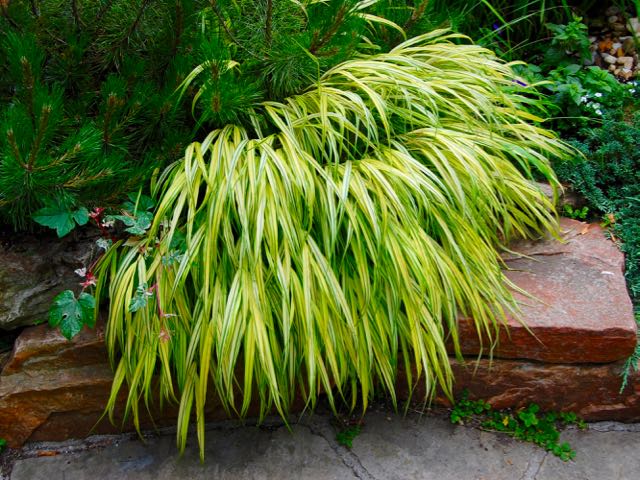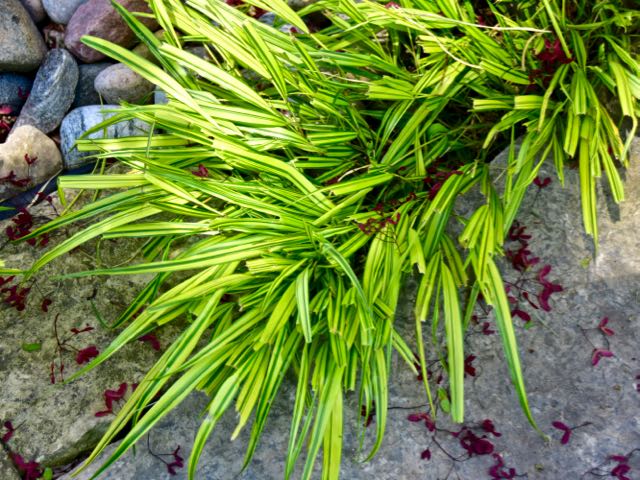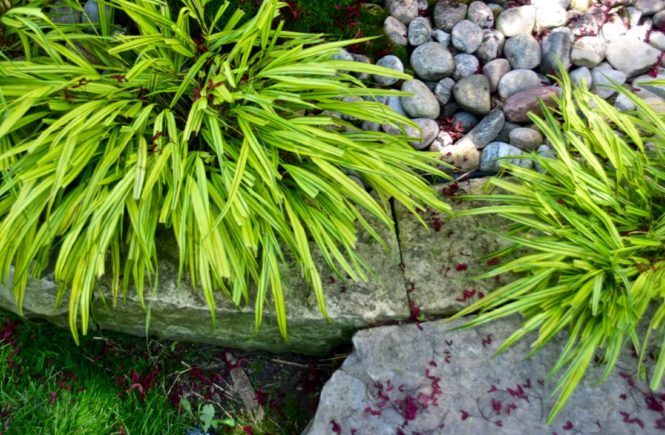You might want to categorize th
is under “pets and diseases.” That first word isn’t a typo. Some disfiguring plant problems have nothing to do with bugs or fungi. Some “pests” are considerably larger.
For example, if your lovely Japanese forest grass (Hakonechloa macra ‘Aureola’) is supposed to look like this.

And, instead, it looks like this.

Then the culprit likely looks something like this – your culprit (or culprits) may differ. Cats can mistake your expensive ornamental grass for common garden cat grass – and chew. Hence, “catchew” disease. Gesundheit!

Catchew is closely relate
d to the disease that, every year, completely flattens out the middle of my ‘Walker’s Low’ catmint (Nepeta x faassenii ‘Walker’s Low’). As it comes from cats plonking themselves right on top of this fragrant plant, I call it “catnest” disease. Unlike catchew, it might actually be preventable by inserting clear plastic forks, tines upward, around the plant crown, making the “nest” far less comfy.
Having seen that trick used in a garden once, I’ve been meaning to try it. Tell me if it works.
Don’t get me started on problems with larger organisms. Like the
prescription pharmacy
smushed plants between us and our neighbour’s garden that result from “flyerguy” disease. That one was solved by building a path just for delivery people who cut across our yard. It’s way better than being the crazy lady who runs out yelling, “Not through the garden!” We keep the path shovelled all winter.
Ah, the things they don’t write in garden maintenance books. Any tips to add?





5 comments
Now if someone would only come up with something for keeping poop off the grass – not sure of the culprit but we’re thinking raccoon or skunk….or a cat that doesn’t go for the whole burying it bit.
The wrong kind of poo is a problem in a garden. I do know that raccoons prefer to set up a neighbourhood latrine and tend to save it up for that. We had that problem on the roof of our garden shed. The suggested solution is usually to clean up after them (carefully, because raccoon poo includes yucky parasites) before a latrine becomes established. Skunk scat, I know zip about.
Interesting. Never once thought about neighboring cats in my garden. Always assumed that it was rabbits or chipmunks chewing up the grass. Thanks for sharing.
I might have thought the same, Nella, if I hadn’t spotted the felines mid-chew. The featured picture is in a garden I saw on a tour. When I said to the owner, “I’ll bet you have cats,” they confirmed.
I am constantly surprised by my neighbours cat hiding out so quietly in my yard. They love lying in the long grass and also underneath low branches and sometimes will remain in place while I am working near them.